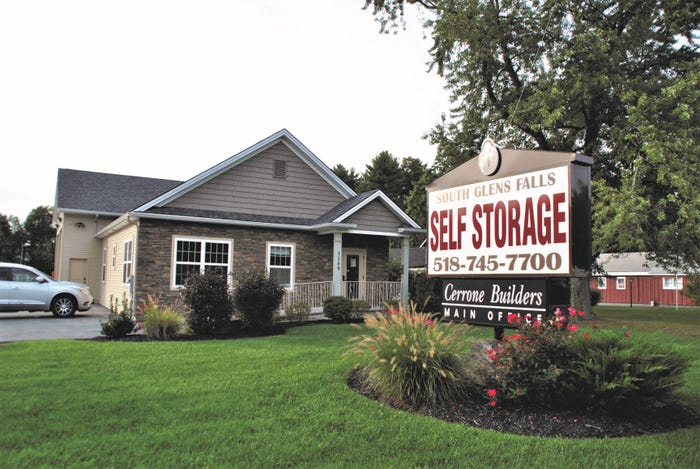Smaller self-storage markets are often more approachable for new facility development. Learn the pros and cons of these opportunities, and how to make secondary and tertiary sites financially viable.
October 8, 2018

During the current self-storage development boom, much attention has been paid to increasingly large projects in big cities and their immediate suburbs. These 1,000-plus unit facilities with all the bells and whistles are impressive. However, smaller, rural markets are attractive for many investors, as they can be more approachable.
Building in a secondary or tertiary market requires a different strategy. Here’s advice on how to locate, build and manage these properties.
Choosing a Market
One of the first questions a self-storage developer faces is whether demand exists to support a project and, if so, how much should he build? Expert analysis is standard for large facilities, but in small markets, the high cost of a professional study and lack of readily available data often lead to a do-it-yourself approach.
Ideally, you’re looking for an area in which existing facilities are at least 90 percent full. If you find a three-year-old property sitting at 60 percent occupancy, it’s likely an indication that the market is saturated. Conversely, it’s a good sign for a new development if existing sites don’t present themselves well or are slow to respond to inquiries. Rental rates for new properties can easily be 20 percent higher than those of a poorly run or neglected site.
Also, look for markets in which the properties don’t show up in a Google search or there’s a clear lack a Web presence. If these operators don’t accept credit cards or have an online reservation system, you have the opportunity provide a better rental experience.
Once you’ve identified a market with opportunity, dig deeper. Compare population against existing supply to see how they stack up to national averages. When calculating demand, there are two ways to look at it:
What percentage of households rent a unit? (The national average is 9.5 percent.)
How many square feet of storage per person exist in the market? (The national average is 8.32 square feet.)
Bear in mind that markets with higher amounts of boat/RV storage (e.g., vacation areas) may support more square feet per person due to the larger units.

South Glens Falls Self Storage in South Glens Falls, N.Y., is operated in conjunction with the owner’s home-building business. An attractive office sits on the main street with the basic single-story storage units at the rear in a gated area.
Planning the Build
When building self-storage in small markets, phasing is key. It minimizes the risk and creates the shorter rent-up period these developers typically desire. Building in phases also allows you to finetune the unit mix as you grow. On the downside, you’ll have to go through the lending and permitting process multiple times.
Here are some other common aspects to building in secondary and tertiary markets:
Storage facilities in small markets are less likely to be climate-controlled, though developers are building them in more suburban and rural areas.
In rural markets, facilities are more likely to offer larger unit sizes, including boat/RV units and possibly outdoor parking.
Basic drive-up buildings are more likely to be 40 feet wide than the 30 feet you’ll find in more densely populated areas.
Small-market facilities are more likely to be operated without a manager. The office isn’t a necessity and may come with a later phase if at all.
Enhancing the Customer Experience
It’s extremely rare to be first in a market. Today, nearly all new self-storage facilities are going into areas with existing competitors. Yet, you can stand out and command premium rents by offering a better customer experience.
An easy feature to start with is security. Modern video cameras are reasonably priced, offer detailed resolution and an excellent value. If the budget allows, a fence and gate are next.
Adding a few architectural elements to your facility can improve the overall appearance of the property. Landscaping is another area where a small investment can make a big improvement in curb appeal.
In addition to offering a better physical product, you need to provide excellent service. Operators of existing sites, particularly ones that are nearly full, aren’t always great at responding to inquiries. About half of prospective customers simply rent from the first business they contact. Your goal is to answer promptly and rent that unit before the competition ever has a chance.

In & Out Self Storage in Pleasant View, Tenn., is in an out of the way location but visible from a major highway. A small expansion was underway when this photo was taken, and there’s room for continued growth.
Managing to Budget
Small-market self-storage properties require a different management approach than their larger siblings. Generally, the revenue can’t support an office with a manager, at least not during the first phase. The most basic method of managing a rural site is to run it from your phone, and set appointments as needed to meet new clients. Some owners incorporate a small office or unit for rental activities, but the corresponding lavatory requirements often push a formal office out of the budget.
Most small-town storage businesses are independently owned and rarely have employees. In fact, it’s common to run the operation from a separate, existing business—either one you own or another you pay to assist you with rentals. For example, gas stations, sandwich shops and liquor stores have all served as rental offices for storage businesses.
Technology can help you add more flexible rental options. Online reservations and leases are supported by management software, which has become more affordable thanks to scaled pricing plans. Self-storage kiosks have increased in popularity as well. These machines can offer live chat support as a new tenant works through the process of choosing a unit, paying and signing an agreement. They can even dispense a lock.
Normally, unoccupied units should be locked to keep the facility secure and ensure clean units remain so. For unmanned sites, tamper-evident tags can be used to deter entry and make it easy to spot any issues during a drive-through inspection.
Ensuring Profit
New self-storage owners/developers often ask how small of a site can they build and still make money. This is understandable, as most are stretched financially on their first project. Indeed, a small, unmanned, owner-operated site can be profitable. However, there are some expenses (and hassles) that aren’t much different on a 50-unit facility than one with 200 units. You’ll need to consider the level of revenue you need to make the project worthwhile.
During site planning, think about your exit strategy. Larger urban and suburban sites are attractive to bigger buyers who can pay a premium. Their size helps them cover the overhead. In a rural area, you might not be able to build a single 100,000-square-foot facility, but it wouldn’t be difficult to build three 50,000-square-foot sites over several years. That portfolio can eventually be very attractive to buyers.
Smaller-market facilities are the easiest way to break into the self-storage business. The overall development cost is lower, you can retain your day job, and it can be done without bringing on employees. When it’s time to scale up, additional locations or phases can be added. You’ll eventually create a valuable group of properties that can provide significant income or command an impressive sales price.
Steve Hajewski is the marketing manager at Trachte Building Systems, which designs, manufactures and erects a full line of pre-engineered and customized steel self-storage systems, including single- and multi-story, portable storage, interior partition and corridor, and canopy boat/RV. He also owns a self-storage facility in Wisconsin and is a frequent contributor on Self-Storage Talk, the industry's largest online community. For more information, call 800.356.5824; visit www.trachte.com.
About the Author(s)
You May Also Like





